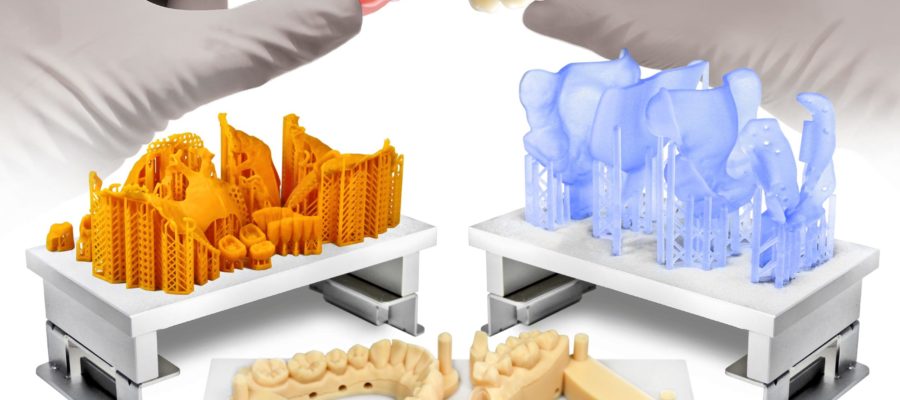Unless you’re practicing in a very remote, offline place, you’ll know about at least some of the benefits of 3D printing for dentistry. Regardless of where you are in the 3D printing transformation, it’s difficult to deny the benefits. However, even if you’ve made the decision that 3D dental printing is the way to go, you still need to figure out how to choose a 3D printer that’s right for your clinic and patients.
Fortunately, the overall process isn’t much different than choosing any other dental clinic equipment. The following pointers will help you find the best printer for your practice.
What Would You Like to Print?
There are dental 3D printers that can make one or more of the following applications.
- Dental Implant Surgical Guides
- Occlusal Guards / Bite Guards / Bite Appliances
- Dental Models (Crown & Bridge, Orthodontic Clear Aligner, Bleaching Tray)
- Dentures
- Partials
- Provisionals / Temporaries
- Indirect Bonding Trays
- Custom Trays
Printers are available in a wide range of levels and performance specifications (mainly different levels of speed, versatility and detail). Entry-level machines may be surprisingly affordable, but can quickly become limiting. Mid-range printers are often the better way to go, even if it’s your first 3D printer. And professional printers can literally transform your practice.
Consider an Optical Scanner
Optical scanner costs can be a major cost factor, and you can still make the transition to dental 3D printing without one. But the cost savings may be quickly eroded later. Without an optical scanner in-house, you must outsource scans to an imaging centre. When you do, you’ll need to be concerned about getting files properly, and deal with the added time, inconvenience and frustration of that. Optical scanning is a key part of digital dentistry, and taking full advantage of the convenience and ROI it offers. For example, a CBCT scanner is invaluable for its pre-operation scans.
Determine Your Budget
Like we said, you’ll be surprised at the low cost of many of the ‘dental’ 3D printers you’ll find. But, unless you’re a technical whiz, or have an in-house IT department, you should start your search with mid-range or chairside printers. The added features and functionality make them more than worth the added investment. This includes features like software and firmware that have calibration settings built in to ensure that your prints are clean, precise and consistent.
The next level up from chairside dental printers are hybrid dental 3D printers. These machines are truly capable of transforming your clinic by giving it many dental lab capabilities, for not that much more than many chairside printers. If you plan to routinely use your printer for highly detailed crown & bridge models, implant models, and you want them printed quickly, hybrid 3D printers are the way to go.
Look for Post-Processing Capabilities
Finishing your 3D dental print is a big part of the entire process. A printed object must be washed, dried and then UV-cured before you can handle it or apply it. Post-processing is a necessary part of digital dentistry and choosing dental 3D printers that have compatible post-processing machines has its advantages.
Ask Around
You can spend unimaginable amounts of time researching 3D printers, their various applications, different optical scanners and their features, post-processing and its requirements – and still be not much closer to making a decision on the path to take. If this is closer to your situation than not, it can help to talk to someone who has been down this road before. Not only will they be able to relate to your questions and concerns, but they will be able to share the practical solutions they came up with.
If you found this post helpful, check out our recent article Digital Dentistry: Dental Milling Machines.
